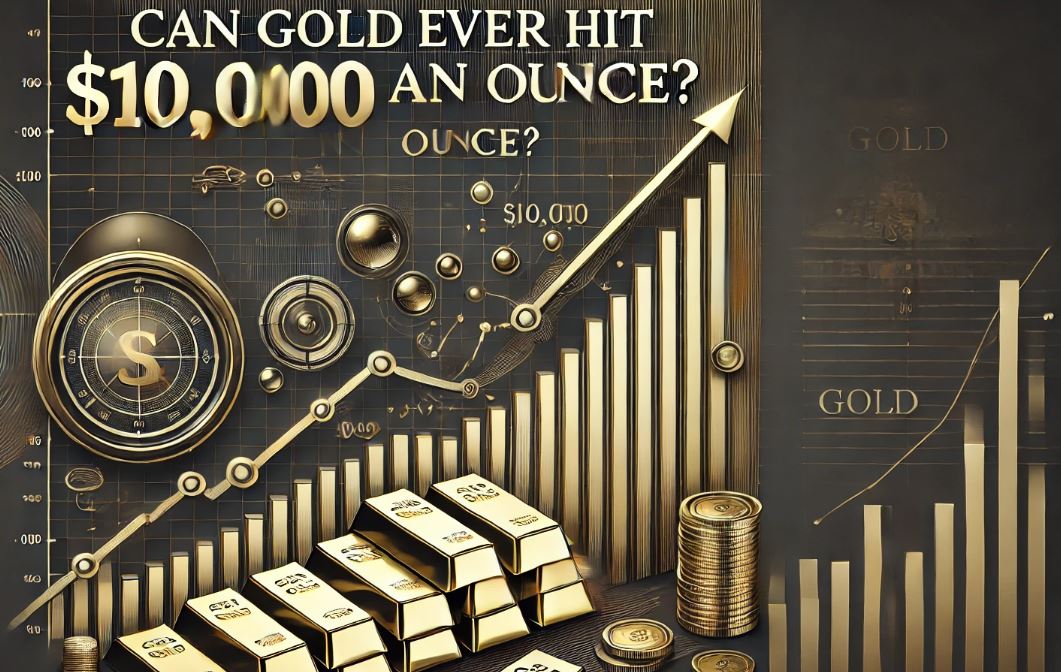Or gold can hit $10,000 an Ounce by 2030 depends on how macro trends develop over the next five years. In this article we look at the conditions under which gold can rise to $10,000. Can gold reach $10,000? Yes, potential.
RELATED – A Gold Price Prediction for 2025 to 2030 | InvestingHaven.com
As inflation steadily rises, geopolitical tensions escalate, and fiat currencies come under increasing scrutiny, a new question arises: Can strike gold $10,000 an ounce?
While some may consider this gold price target impossible, the argument for gold moving towards $10,000 is not as far-fetched as it seems.
In this article, our team here at InvestingHaven.com explores two scenarios:
- A base case: reached gold $5,000 by 2030.
- A exceptional case: extreme conditions push the price of gold up $10,000 an ounce.
We will discuss the exceptional case in more detail. We emphasize what conditions must exist to ensure that gold will reach $10,000 by 2030. For each catalyst we indicate whether an emerging trend is visible in the data.
Base case: Gold moves to $5,000 by 2030
1. Inflation and currency devaluation
One of the main factors that causes the gold price to rise is inflation.
As central banks continue to print money to stimulate economies, especially in the wake of the COVID-19 pandemic, the value of fiat currencies is declining. Known for maintaining its purchasing power, gold tends to rise during periods of inflationary pressure.
In the base case, where inflation has been moderate but persistent over the past decade, gold prices are likely to trend higher, possibly reaching $5,000 by 2030.
Historical correlations between inflation and gold prices suggest that gold benefits significantly when real interest rates remain low or negative. Investors who want to protect themselves against currency devaluation can push the gold price up. This is one of many long-term gold charts published on our own blog InvestingHaven.com:


2. Accumulation of gold by central banks
Central banks have steadily increased their gold reserves, a trend visible in countries such as China, Russia and India. These countries are trying to diversify their assets away from the US dollar, which has been the global reserve currency for decades.
In the base case, this steady accumulation of gold by central banks will continue over the next decade, creating consistent demand and supporting the gradual rise in gold prices.
With geopolitical tensions unlikely to subside, gold’s role as a key reserve could push gold towards $5,000.
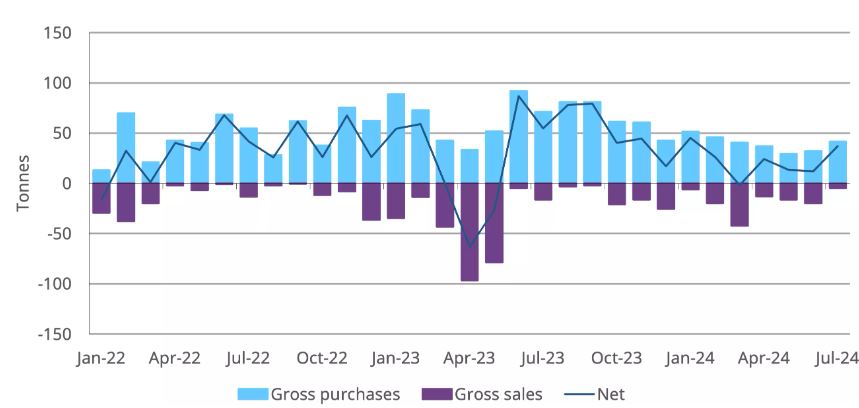

3. Slow but steady de-dollarization
While complete de-dollarization is unlikely in the short term, there is growing momentum among countries seeking alternatives to the US dollar.
Countries like Russia and China have already started trading more in their own currencies, and efforts to reduce dependence on the dollar are increasing worldwide.
In this base case, a gradual shift in the US dollar drives rising demand for gold as countries try to diversify their reserves. This slow de-dollarization would provide a steady tailwind for the gold price, making $5,000 by 2030 an achievable goal.
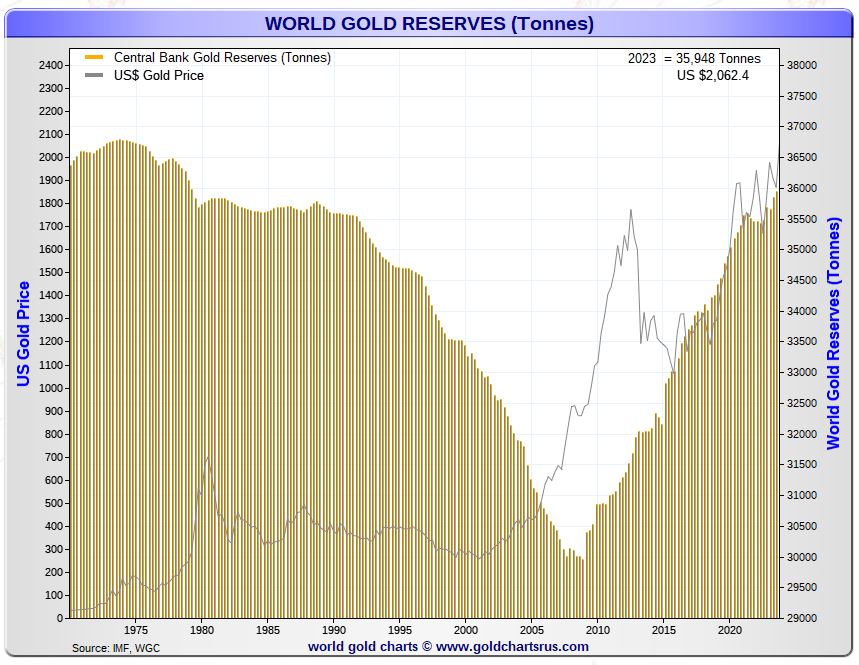

4. Supply constraints due to mining challenges
The supply side also plays a crucial role in supporting higher gold prices. Gold mining is becoming increasingly difficult, with fewer major discoveries and rising costs for extraction.
As supply tightens and demand grows, the fundamental imbalance could cause the price of gold to rise steadily.
In this scenario, supply constraints, inflation and central bank demand will gradually push gold towards $5,000.
Base case versus the exceptional case
While the base case for gold moving to $5,000 is based on current trends, what happens if more extreme conditions arise? Gold could rise well above $5,000 and possibly reach $10,000 in the event of:
- Runaway inflation;
- accelerated de-dollarization;
- or major geopolitical upheavals.
The following sections examine the catalysts that could lead to this exceptional scenario.
Before we look at each of the catalysts that could drive the price of gold to $10,000, let’s visualize what $10,000 gold looks like. Below you will find the monthly gold price chart over a 60 year period (1970 – 2030).
If gold were to reach $10,000 in 2030, it would move to the top right of this chart. Purely from a map perspective, it’s not impossible, but certainly an elongated scenario, not a sustained scenario either, but more of a blow-off-top scenario.
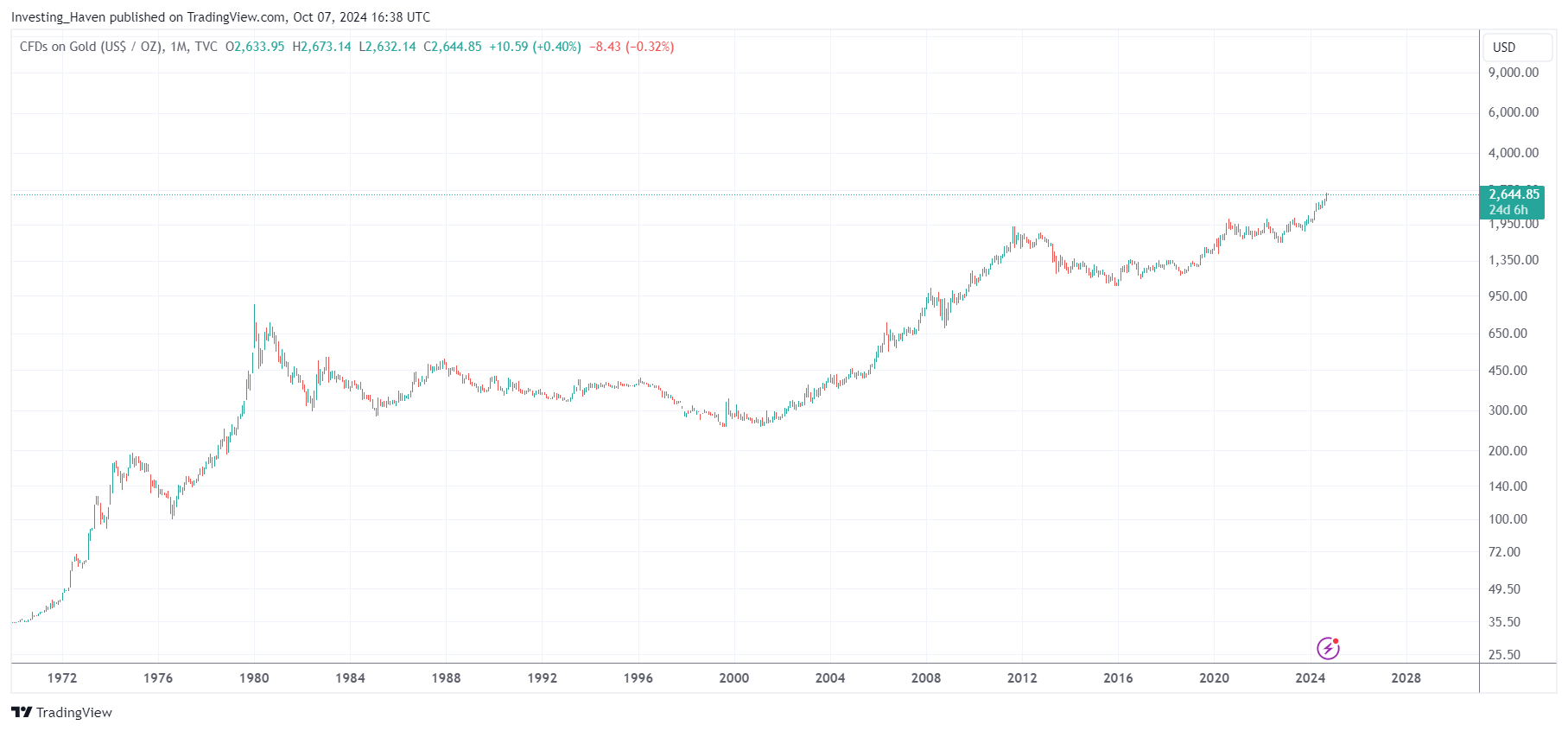

Exceptional case: gold rises to $10,000
1. Runaway inflation or hyperinflation
In the rare case, inflation spirals out of control, leading to a scenario similar to what we have seen in countries like Venezuela or Zimbabwe.
If the US or other major economies experience runaway inflation, gold prices could soar as investors flee the collapsing fiat currency.
Runaway inflation would increase demand for hard assets, and gold would be in extremely high demand as the ultimate inflation hedge
Under these conditions, gold could quickly rise above $5,000 and potentially take a hit $10,000 while investors seek safety.
2. Rapid de-dollarization
While the basic scenario assumes slow development de-dollarization process, the exceptional case provides for a more dramatic shift.
If a global economic crisis or political realignment causes countries to abandon the US dollar’massively‘, the demand for gold as a reserve could increase.
This rapid de-dollarization would cause central banks, especially in emerging markets, to rush to accumulate gold as a safe alternative to the dollar. Such a scenario could send gold prices soaring $10,000 as trust in fiat currency declines.
In 2023, officials announced that BRICS countries prepare a gold backed coin:
It’s official
RT (Russian-sponsored TV) says the new BRICS currency will be backed by gold pic.twitter.com/YIjKwPTiTw
— Willem Middelkoop (@wmiddelkoop) July 7, 2023
Note that central banks are already hoarding


3. A global geopolitical or economic crisis
Gold has always done well during periods of global instability. In an exceptional scenario, a large-scale war or other serious crisis could lead to unprecedented demand for gold.
In that scenario, investors, as well as the private public, fearing the worst, would buy gold as the ultimate store of value.
Such a crisis could easily send gold prices into crisis $10,000 range. That’s because global markets could collapse and currencies devalue in response to extreme geopolitical risks.
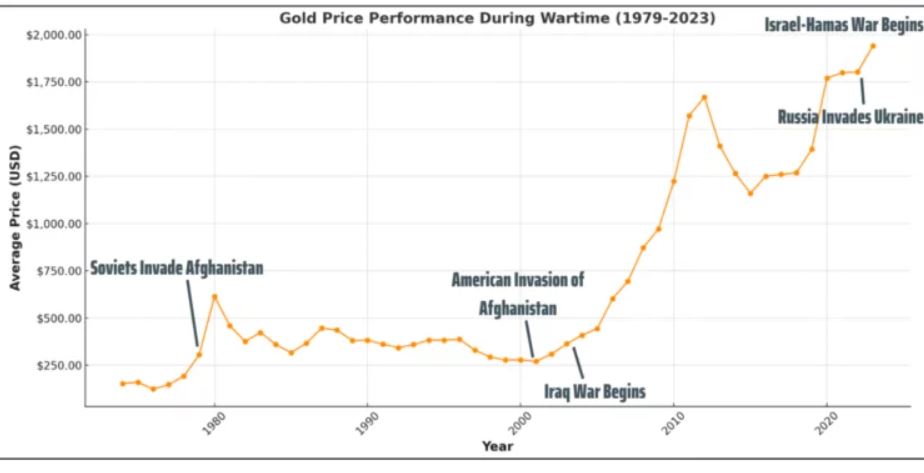

4. Large-scale purchases by central banks
If central banks around the world dramatically accelerate their gold purchases, demand for gold could exceed supply. This, in turn, would push the price of gold sharply higher.
This coordinated increase in gold reserves would signal a massive vote of no confidence in fiat currencies. It would trigger a rush into gold that could push it to $10,000.
In a sense, central bank buying of gold has been a strong trend since 2009. Gold will take a hit $10,000should accelerate this trend.
5. [speculative] Rise of tokenized gold
Although speculative, blockchain technology and the digitalization of assets, including gold, could lead to greater liquidity and accessibility.
In an exceptional case, tokenized gold assets could become mainstream. This would allow investors from all over the world to easily purchase and trade fractional shares of gold.
RELATED – The Future of Tokenized Gold: Bridging Tradition and Innovation
This rise of tokenized gold could lead to massive demand, further increasing prices and pushing gold towards the market $10,000.
Conclusion: Is $10,000 Gold Possible?
It may seem unlikely that gold will reach $10,000 per ounce in the current environment, but exceptional circumstances could make this a reality.
The basic scenario of $5,000 by 2030 is more feasible based on current inflation.
However, gold could rise $10,000 in the event that one or more of these circumstances occur:
- Extreme demand from central banks.
- Restrictions in the supply of gold.
- Runaway inflation.
- De-dollarization.
- A global crisis.
Whether it’s inflation, currency devaluation or a digital gold revolution, the path to $10,000 gold is worth considering. It’s not the base case, though, so don’t bet on it.


